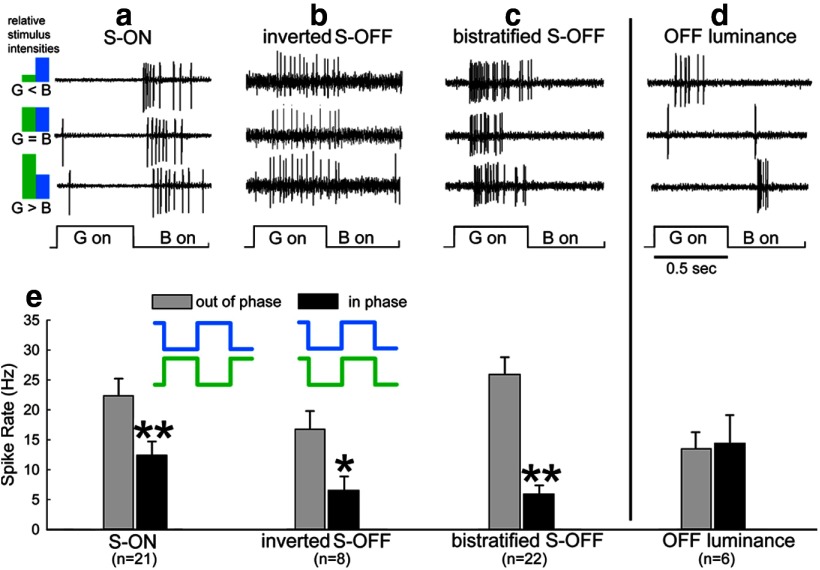Figure 1.
Ganglion cells were classified as color-opponent (a–c) or luminance cells (d) by their responses to alternating flashes of a B-LED and a G-LED. The stimulus diagram (left) indicates the relative intensities for each row. The flash intensity of the B-LED was not varied and alternated with flashes of a G-LED the intensity of which was varied from much dimmer than the B-LED (top row) through equiluminant (middle row) to much brighter than the B-LED (bottom row). Three different types of S/M color-opponent ganglion cells consistently spike at the onset (a) or the offset (b,c) of the B-LED regardless of the relative brightnesses of the LEDs. In contrast, an OFF luminance-sensitive ganglion cell (d) responds to offset of the brighter LED and has a minimal spiking response at equiluminance. e, Responses were compared with B-LED and G-LED stimuli presented in phase or out of phase (diagram, center). For all three opponent cells, responses were smaller when the LEDs were on at the same time than when they were presented sequentially. OFF luminance cells responded slightly more when the LEDs were in phase. The B-LED and G-LED intensities in the in-phase conditions were isoluminant, as determined by the stimulus sequence shown in a–d, where the G-LED was varied from brighter to dimmer than the B-LED.

